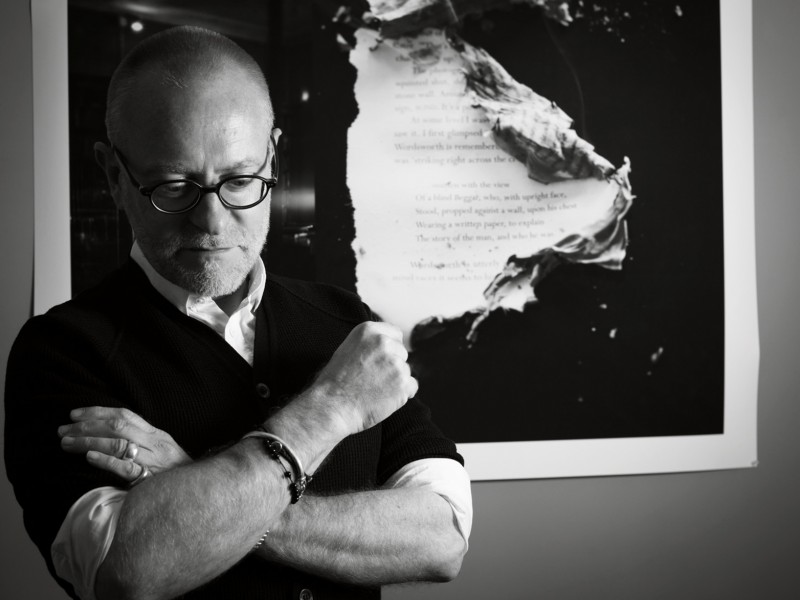When the head of the philanthropic Sancaklar Foundation, Suat Sancak, first approached Emre Arolat with a request to design a new mosque for 500 worshippers, the architect turned him down. “I told him I’m not that kind of architect,” he remembers. Arolat wasn’t simply playing hard to get, “It was a prejudgement. I thought they were looking for a replica of an Ottoman mosque.” While Arolat ‘adores’ the volumetric composition of classical Ottoman mosques, there has been a propensity to build ‘pathetic’ imitations of these 500-year-old buildings. These new mosques are often commercialised forms, he says: “We are accustomed to seeing every kind of replica and even some caricatures”.
Arolat reels off a few recent egregious examples: a mosque in Ankara that combines a supermarket; in Mersin a mosque’s minarets “look like rockets” about to be launched; and the Mimar Sinan mosque is a “clumsy replica” named in honour of a nearby mosque designed by legendary Ottoman architect Mimar Sinan, that’s now surrounded by skyscrapers. It’s not limited to Turkey. One of the latest landmarks of Islamic architecture is the Sheikh Zayed Grand Mosque in Abu Dhabi. “It’s renowned for having the biggest carpet in the world and the most bombastic chandeliers,” says Arolat. “It’s a tourist attraction. It’s a place to see and to be seen at. It’s a place for Instagram or Facebook. Islamic architecture is passing beyond a very dangerous period because of the pressure of global capitalism.”
Luckily Suat Sancak wouldn’t take no for an answer. A few days after their first meeting, he came to the office with a picture of the site on which he wanted to build the mosque. Büyükçekmece on the outskirts of suburban Istanbul overlooks a picturesque valley with a lake below. “I was quite impressed with the panorama and the untouched aura of the valley,” Arolat recalls. “They told me they were willing to give me a degree of freedom with the design, and this time I was supposed to accept the job.”
As Turkey’s pre-eminent practice, Istanbul and London based Emre Arolat Architects (EAA) has produced the full gamut and scale of building typologies. From factories to luxury shopping centres and multi-residential buildings, EAA have been the recipients of numerous awards including the Aga Khan Award and the Mies van der Rohe Award. Among their many works they have also designed two housing projects for the Sancaklar Foundation. But EAA weren’t known for designing mosques. Since Arolat formed EAA in 2004 with partner Gonca Pasolar, a modernist rationality has governed their work. Yet it’s steeped in research. The practice develops a deep understanding of the history of a building type, and its location. Indeed, sensitivity to the role architecture plays in cultural memory is evident in such projects as the Antakya Museum Hotel built over an archaeological site and EAA’s refurbishment of the disused Russian textile factory in Kayseri as part of the Abdullah Gül University City Campus. “EAA aims to keep and project memory in the form of traces of a previously undervalued industrial heritage,” according to Suha Özkan, co-author of the EAA monograph Context and Plurality (2013), and a former director of the for architecture. “Implicitly, Arolat returns a sense of honour to the structures that served their industrial purpose for almost 80 years.”
Arolat’s sensitivity is hard won. His university education and experience working with Metcalf Associates in the United States for a year inspired a postmodernist dalliance. “I was influenced by postmodernism—Michael Graves and James Stirling were my heroes,” he told Philip Jodidio, co-author of Context and Plurality. “I did a number of things [in Turkey] that I should not have done in terms of design in the late 1980s,” he admits. “Putting American postmodern high-rise buildings in the middle of Istanbul was a mistake. I did not try to use Turkish forms, but opted instead for an international vocabulary. I designed a building that was inspired by something I saw in Boston. I still see it every day and it is a kind of punishment for me.”
If memories of bad buildings haunt him, positive memories of place inspire him. “[Pritzker prize winner] Rafael Moneo wrote in one of his articles that ‘the place whispers to an architect’,” says Arolat. “I’ve adopted that saying practically as my motto. That intimate sense of place is what really excites and inspires me.”
Indeed it’s not just an appreciation of place or a respect for the architectural history of Islam that would play an intrinsic part in the design of the Sancaklar mosque. For Emre Arolat it was also deeply personal. When not spending time in the studio of his architect parents, Arolat spent his childhood summers holidaying with his grandparents in the idyllic surrounds of Bursa, in Turkey’s Marmara region. The area known as ‘Green Bursa’ because of its numerous parks and gardens, the vast and verdant forests surrounding the city and the picturesque setting in the foothills of the Uludag mountain, was the first capital of the Ottoman Empire. Among its many famous 14th century mosques, is the Emir Sultan mosque.
“Their house was one of the most peaceful places on earth,” Arolat recalls. “My grandma was by far the nicest person I have ever known. She was extremely big hearted. She was decent, humble and reliable. She was quite religious, reading the Quran every day and praying regularly. Conversely my grandpa was an atheist. He was a real intellectual who read French books instead of the Quran and he made fun of religious rituals. In spite of their religious differences, my grandparents loved each other … Instead of causing any trouble or fighting, the religiousness of my grandma and the atheism of my grandpa somehow balanced each other … I lost a remarkable piece of myself when my grandma died,” he remembers.
The crowded funeral was held in the Emir Sultan Mosque. Long after the funeral ended and people had walked away, Arolat stayed. “I didn’t know why, but I didn’t move at all. The courtyard was getting sombre and lonely and the silence was a bit creepy, but somehow I felt comfortable. I was not yet an architect, but the power of the place affected me and it was a very important moment in my life.” Looking back, he sees the experience as playing a “very critical role in my architectural career”.
Respectful of religion rather than devout, Arolat believes the ability for the secular and religious to live together harmoniously has been lost. “In Turkey 40 years ago, religion was not the destructive factor in the society [that it is today],” he says. “It’s not very easy to find these kind of values today and it’s sad. I miss them. I miss the sincere religiousness of my grandma. I miss the tolerance, the non-polarised, soft and tender intentions of the society.” Capturing that lost purity and creating a sincerely religious space, appears to be one of the key motivations behind the design of Sancaklar mosque.
As with all their projects, EAA immerse themselves in research. By going to the “roots” they can find a way to be “radical”. Having criticised so many recent mosques, understanding the essential characteristics of Islamic architecture was clearly the best way to avoid the same pitfalls.
For the first three months Arolat did no drawings. “Drawing should be the final result of the thought,” he says. He read the Quran. He discussed the history of Islam with theological scholars. He understood that certain fundamental requirements govern a mosque—the central prayer hall; a mihrab or niche, within a solid qiblah wall orientated towards Mecca; bodies of still water, ablution facilities for washing prior to prayer; as well as separate spaces for men and women. Yet beyond these basic program requirements, Arolat discovered that no Islamic texts stipulate a particular form of architecture for prayer. “We realised that there is no formal definition in the Quran,” he says. “A mosque does not have a predefined form, and anywhere that is clean can be a place for prayer.”
Related Features
-
20
-
-
-

